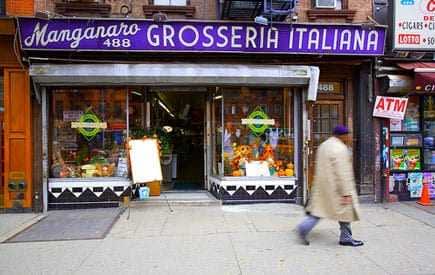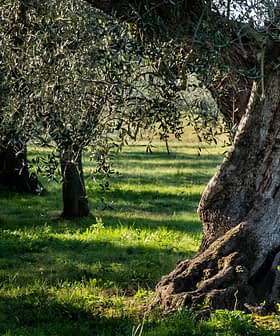By Cristabelle Tumola
Olive Oil Times Contributor | Reporting from New York

With the product being grown right in its own backyard, it would seem that the interest in olive oil has taken a lead on the West Coast, particularly in California. As one of the few places in the U.S. that has the Mediterranean climate necessary to grow olives, it has an advantage that the East Coast will never have. “There are a lot of opportunities for California olive oil producers to educate consumers and to sell their products at places like farmers markets, which may provide a little bit more exposure,” observes Patricia Darragh, Executive Director of the California Olive Oil Council.
According to Paul Vossen, an olive oil expert and farm adviser for the University of California Cooperative Extension for Marin and Sonoma counties, California will be producing over a million gallons of olive oil this winter and at that point will surpass the olive oil production of France. The California Olive Oil Council estimates that over the next decade there will be an expected increase of roughly 8,000 acres planted per year in the state strictly for extra-virgin olive oil production, yet it won’t nearly cover the country’s growing appetite for EVOO. “We produce 1 percent of what we consume in the U.S, which in the next few years will probably double to 2 percent. So we would have to plant a lot of olives to get up to even 5 percent of what we consume in the U.S.,” says Vossen.
So there will still be a strong demand for foreign oils. These imports from places such as Italy, Spain and Greece, dominate olive oil consumption on the East Coast which, despite recent attention to the California industry, buys much more olive oil than the West. “With 41 percent of olive oil sales coming from the Northeast, that’s where the greatest interest in olive oil in the United States continues to be. California and the rest of the West Coast account for 17 percent of sales,” says Bob Bauer, President of the North American Olive Oil Association. He adds that “the recent growth of the olive oil production industry in California probably helps to create the perception that the greatest interest in olive oil is on the West Coast but one of the key factors in creating the demand for olive oil in other regions of the country was the Northeast’s acceptance of the product.”
There is a lot, however, that can be done to energize the olive oil movement on the East Coast like it has been on the West Coast in recent years. The olive oil mania on the West Coast has been pushed by a great availability of tastings, competitions and olive oil farm tours. Although the latter cannot be done on the East Coast, the rest can.
Micheal Castaldo of the New York City Olive Oil Coop, which sells estate grown gourmet olive oil from Southern Italy direct to its members once a year, finds that exposing people to what good olive oiltastes like and educating them about the health benefits has helped increase sales of his olive oil and membership to his coop. He has also seen an overall heightened awareness of olive oil that has increased exponentially in the past 10 years on the East Coast, with a growing number of retailers now specifically geared to selling high-end extra virgin olive oil and olive oil related products, and more supermarkets carrying high quality extra virgins. He also adds, however, that even with an increase in olive oil enthusiasts that “often when I approach organizations about doing an olive oil tasting, it’s still kind of strange to them, they don’t get it. It takes a little while to explain it, how it works, the value in it. Wine tasting is a no brainer, they get it.”
And soon the New York International Olive Oil Competition may help, as many competitions have on the West Coast, to increase interest in olive oil appreciation. “We expect the sensory evaluation course, the first on the East Coast, to quickly sell-out to chefs, industry professionals, and others who want to be able to detect olive oil’s complex characteristics, ” says Curtis Cord, publisher of Olive Oil Times and one of the organizers of the event, adding “California is an olive oil producing region in its own right that is even now surpassing France in terms of total production. Olive oil is in the news there, you see the groves when you’re driving and there are tastings at your grocery store. And while New Yorkers have long been exposed to good olive oils on the shelves at the city’s specialty retailers, there hasn’t been the kind of outreach you’d think to the 112 million people who live on the East Coast. That’s starting to change, and the New York International Olive Oil Competition will certainly be a step in the right direction.”








